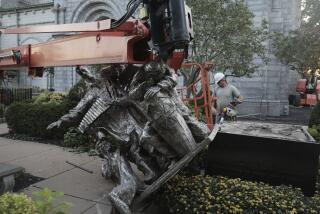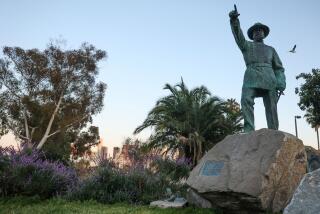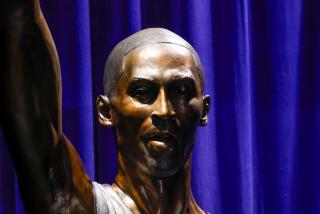Army Stage-Managed Fall of Hussein Statue
The Army’s internal study of the war in Iraq criticizes some efforts by its own psychological operations units, but one spur-of-the-moment effort last year produced the most memorable image of the invasion.
As the Iraqi regime was collapsing on April 9, 2003, Marines converged on Firdos Square in central Baghdad, site of an enormous statue of Saddam Hussein. It was a Marine colonel -- not joyous Iraqi civilians, as was widely assumed from the TV images -- who decided to topple the statue, the Army report said. And it was a quick-thinking Army psychological operations team that made it appear to be a spontaneous Iraqi undertaking.
After the colonel -- who was not named in the report -- selected the statue as a “target of opportunity,” the psychological team used loudspeakers to encourage Iraqi civilians to assist, according to an account by a unit member.
But Marines had draped an American flag over the statue’s face.
“God bless them, but we were thinking ... that this was just bad news,” the member of the psychological unit said. “We didn’t want to look like an occupation force, and some of the Iraqis were saying, ‘No, we want an Iraqi flag!’ ”
Someone produced an Iraqi flag, and a sergeant in the psychological operations unit quickly replaced the American flag.
Ultimately, a Marine recovery vehicle toppled the statue with a chain, but the effort appeared to be Iraqi-inspired because the psychological team had managed to pack the vehicle with cheering Iraqi children.
-- David Zucchino
More to Read
Sign up for Essential California
The most important California stories and recommendations in your inbox every morning.
You may occasionally receive promotional content from the Los Angeles Times.










